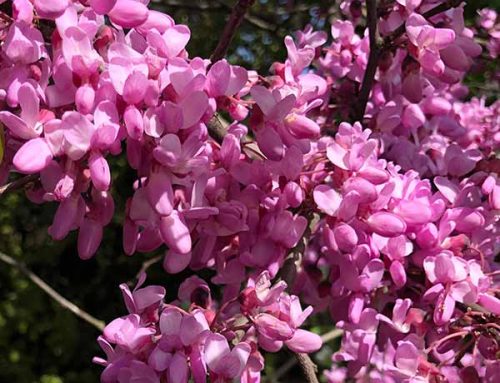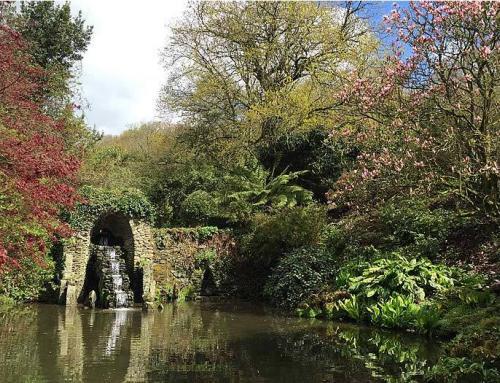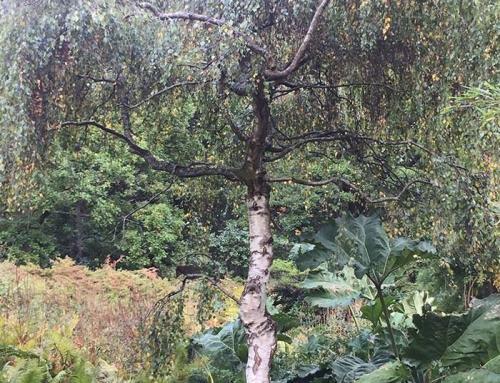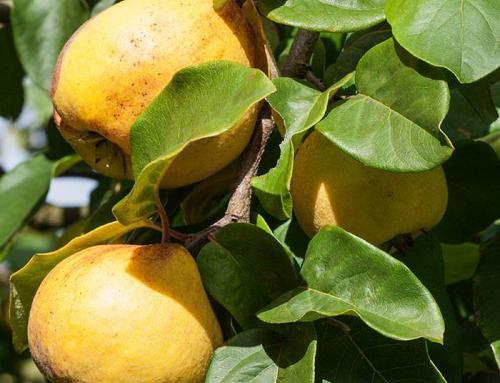The Amelanchier tree and its varieties are known for their stunning spring blooms and lovely autumn colour. These are small deciduous trees (which can also be grown as shrubs) have many common names including shadbush, shadwood, shadblow, Snowy Mespilus, juneberry or serviceberry.
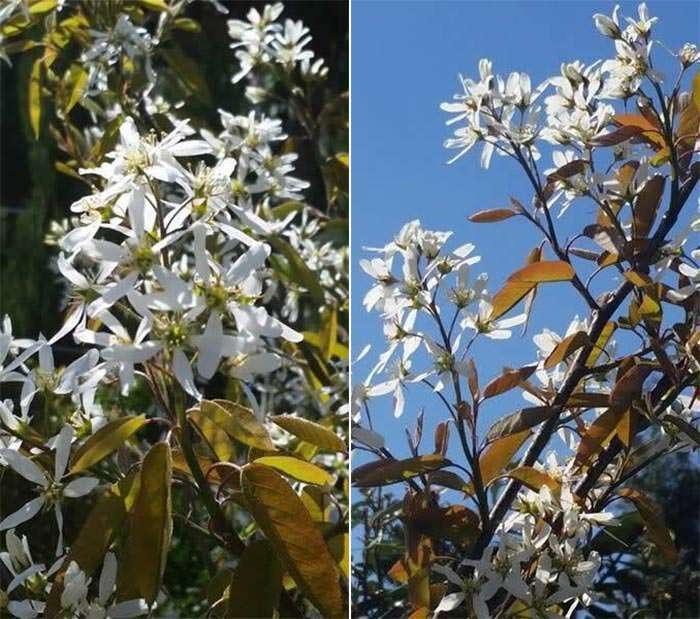
The March blossoms of the lovely Snowy Mespilus have a pleasant scent.
In the early spring, before foliage unfurls, Amelanchier is draped with showy racemes of scented white flowers. The bare branches adorned by 5-petaled star-shaped blossoms truly stand out in the landscape. But the spring is not the only season of interest.
In the autumn, the elliptical leaves of the serviceberry tree turn from vivid green to various shade of orange, gold and red. The vibrant and striking display of autumn colour is further complemented by masses of edible berries. In addition to being highly decorative, the berries are a favourite treat for birds. Perfect if you want to attract wildlife to your garden!
Considering that Juneberry is easy to grow and to care for, and yet offers multiple seasons of interest, it is no wonder that these cultivars are so popular. But how to choose the perfect Amelanchier for your garden? Find out which of these UK-hardy and top-selling Amelanchier varieties suits your preferences.
Choosing the Best Amelanchier Variety
All Juneberry cultivars boast impressive spring bloom and attractive foliage that turns to fiery hues in the autumn. The charming drooping racemes of pure white blooms usually appear in April, borne on bare stems. The flowers are pleasantly scented and invite beneficial pollinators to your garden. The appetising berries follow in autumn months and can be used for making preserves or pie fillings. However, they are often eaten by birds before you get the chance to harvest the ripe fruit – wildlife loves Juneberry fruits. The Juneberry tree in autumn is a sight to behold with a majestic display of colourful autumn foliage.
Still, there are slight differences between the varieties that could influence your decision.
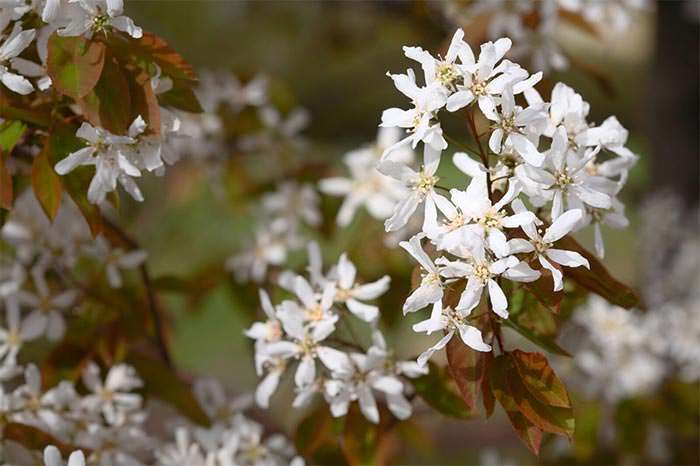
Amelanchier Laevis Snowflakes is completely enveloped by masses of white blooms in the spring.
For instance, the Amelanchier Canadensis species has slightly more upright blossoms, whereas the Amelanchier lamarckii has fully pendulous flowers. Additionally, A. Canadensis tends to have a more upright habit and shrub-like form. A. lamarckii displays a spreading habit that makes it look more like a small tree than a large shrub. Here are some of the best-selling varieties of Amelanchier trees in the United Kingdom:
Amelanchier Lamarckii
also know as Snowy Mespilus, it is prized for its multi-stemmed growth habit and masses of short flower racemes that appear in the spring. The foliage unfurls tinged with bronze, to mature to a glossy green, and finally to various shades of orange and red in the autumn. This variety has an AGM from the RHS.
Amelanchier Canadensis Rainbow Pillar
You would be hard pressed to find a better looking compact tree for small gardens. Also known as Columnar Snowy Mespilus or Amelanchier Canadensis Glenn Form. It has a narrow growth habit that ensures it fits in any space. In a period of 20 years, expected growth for this Amelanchier is just 4 metres in height and up to 2.5 metres in width.
Amelanchier Laevis Snowflakes
Suitable for growing in pots or directly in the garden, Smooth Serviceberry Snowflakes could well become the jewel of your garden. Profuse blooming starts as early as April followed by a colourful autumn display of orange and crimson leaves.
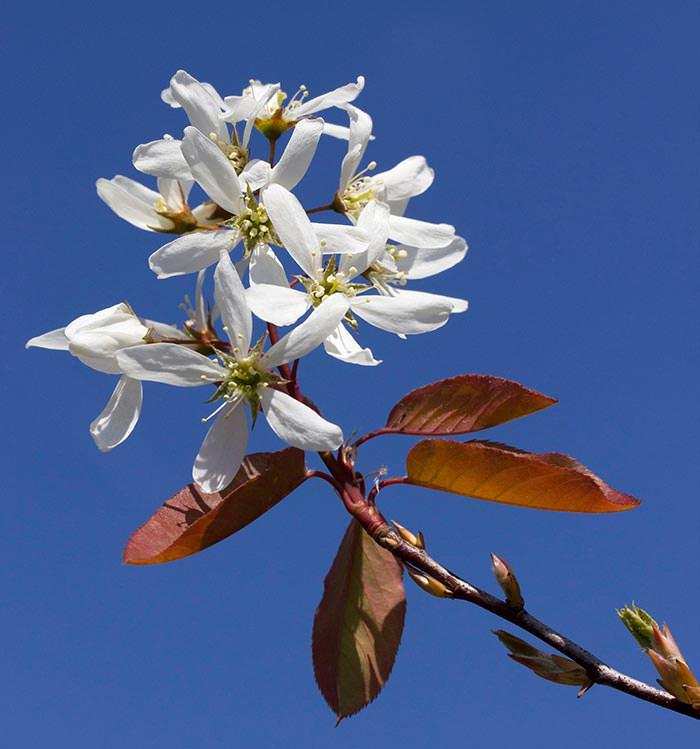
Amelanchier Grandiflora Ballerina – beautiful flowers and bronze-tinged leaves.
Amelanchier Grandiflora Ballerina
Before the bronze tinged leaves appear, this cultivar is fully enveloped in masses of scented blooms. In the autumn, the elliptic foliage darkens to splendid brown and purple shades. In addition, this hybrid can grow to be 4 to 8 metres tall, making it suitable for small and large gardens alike.
Amelanchier Arborea Robin Hill
The distinct feature of this cultivar are its blossoms, which open from pale pink buds. Unlike most other serviceberry varieties, Robin Hill’s flowers fade from light pink to white as the season progresses. This cultivar enjoys an Award of Garden Merit from RHS.
Amelanchier Alnifolia Obelisk
Also known as alder-leaved serviceberry, this variety sports serrated leaves with conspicuous veins. Starting out as vibrant green, the foliage makes a fantastic display of warm autumnal colours before the leaves drop once the low temperatures arrive.
How to Care for Juneberry Trees
Amelanchier trees are low-maintenance: these cultivars do not need much to thrive. Grow in moist, well-drained soil in full sun to partial shade. While slightly acidic soils are suited for growing Amelanchier, it is recommended to avoid planting them in chalky soil. For best autumn colour, pick out a sunnier location in the garden.

Combine Amelanchier Obelisk with Rhododendrons and Tulips for a splendid floral display in the spring.
Frost-hardy and robust, Amelanchier will not require sheltering in the winter. While some varieties have been naturalised in the United Kingdom, the majority of Amelanchier cultivars originates from North America. With that in mind, it is not surprising that these trees and shrubs are exceptionally hardy in the UK, and that they fare well in subzero temperatures.
When it comes to pruning, these flowering ornamental trees need little to no work to stay in shape. Simply remove any dead or damaged growth, and your plants will thrive. Pruning should be done in late winter, before flowering. You can also trim your Amelanchier tree at this time to achieve a desired size or shape.
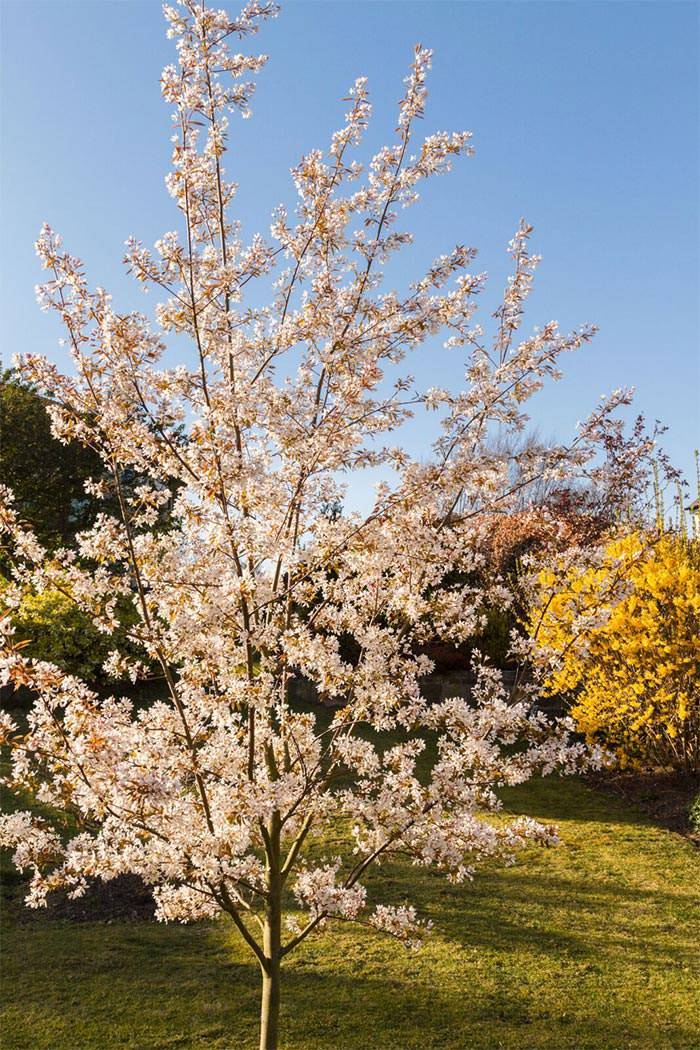
Juneberry Variety Robin Hill starts out with pale pink flowers that gradually fade to white.
Juneberry varieties are both versatile and striking. You can use these ornamental trees as a focus of interest in small gardens or in mixed shrub borders. Plant near patios to enjoy a light shade and lovely spring fragrance.
Here at Paramount Plants & Gardens, we offer Juneberry trees in various sizes. Younger specimens tend to be around 1.3 to 2.5 metres height excluding the pot, but we also offer more mature trees to 4 metres in height. You can buy online – we deliver UK wide.

